







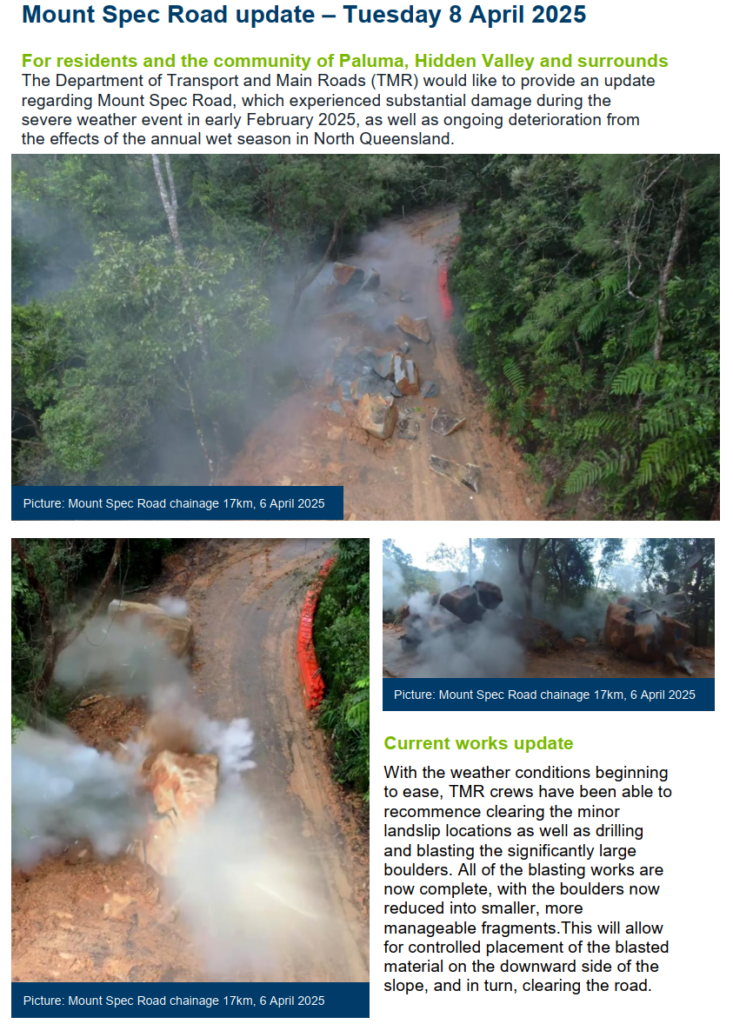
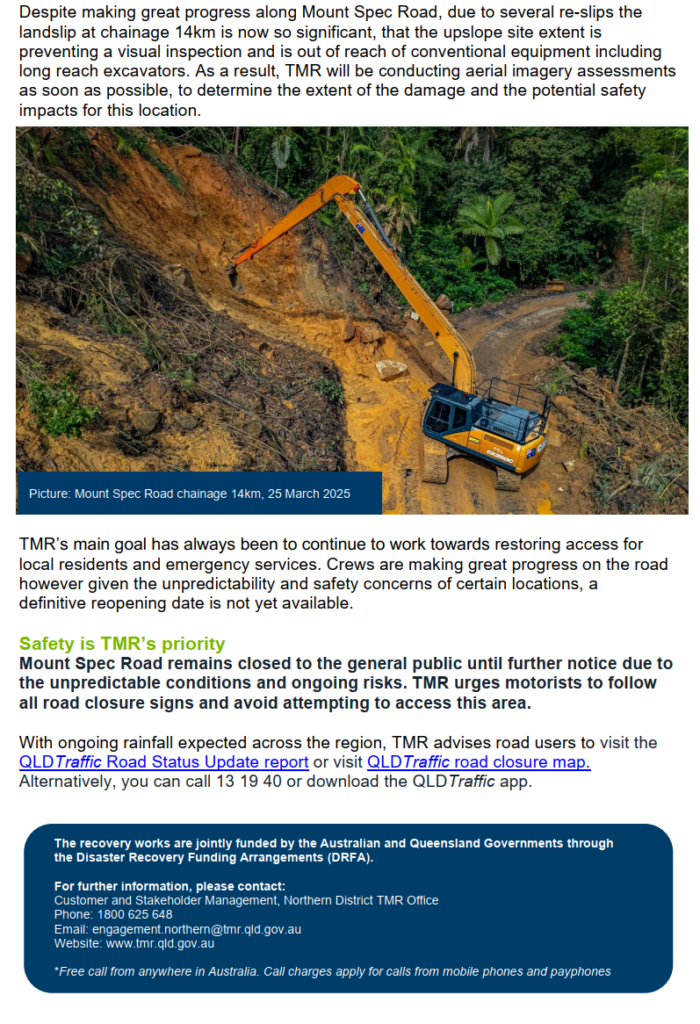
Prior to the meetings below the PDCA will provide a BBQ lunch at noon, April 12th at the Community Hall
A community meeting to review our experiences during & after the February extreme weather event will now be held on Saturday, 12th of April, commencing at 1 pm in the Paluma Community Hall. The objective is to record lessons learnt for the future, discuss known problems & see what we can do to improve how we manage such events. All members of the community are encouraged to attend. See agenda here.
If you are unable to attend but would like to have a specific issue included for discussion, feel free to contact Charlie Allen, Peter Cooke, Anneshka Brown or Jamie Oliver to let them know.
There will also be a regular meeting of the PDCA Council at 3pm, after the community meeting. This PDCA meeting will cover various ongoing items (see agenda below). While these meetings have traditionally been considered as business meetings attended only by the elected members of the Council/Executive, we welcome any residents to attend and to raise any items that they would like the PDCA to consider in addition to what is already on the agenda. Here is the proposed agenda.



 On The Mountain
On The Mountain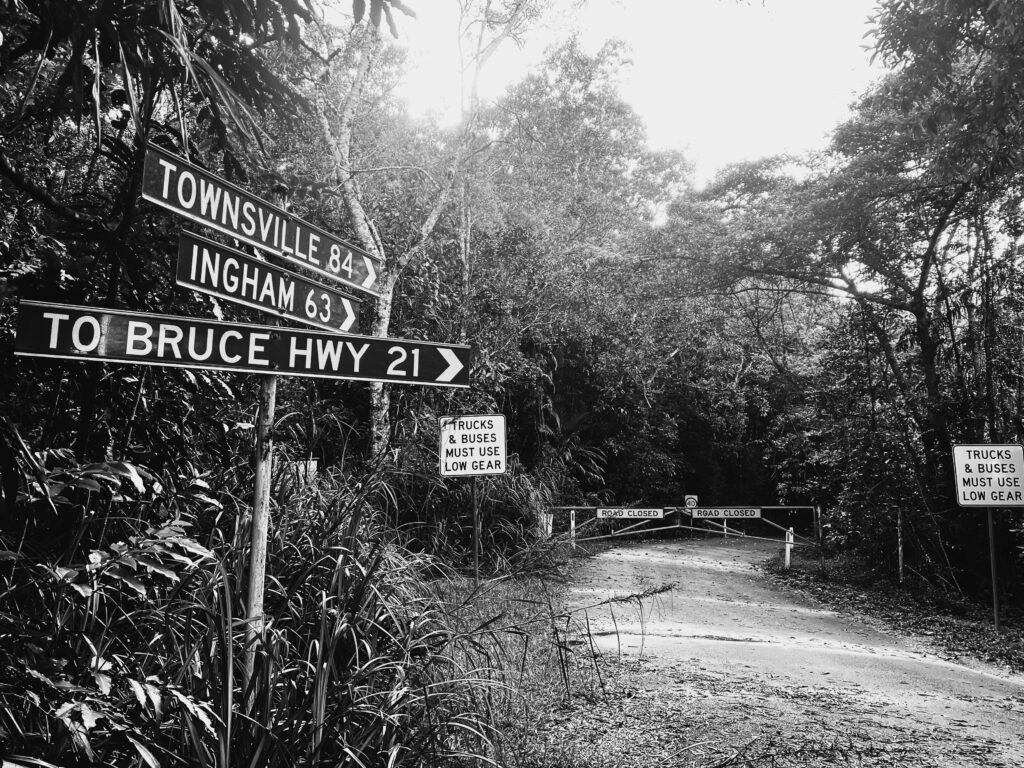
It is good to know the TMR is working hard at getting resident only access via the range road during daylight hours. However, the ongoing wet weather has been a hindrance and the possibility of a fully accessible range road seems a little too far in the distant future. Even so, the promise of blue sky, sunshine and reduced humidity isn’t far off and gives reason to lift the spirits a little. Residents of Paluma and district whose livelihoods aren’t dependent on full public access via the mountain range road are fortunate and when the opportunity arises, a little support and kindness for anyone in our community can go a long way. It’s been good to see and hear examples of this in our community.
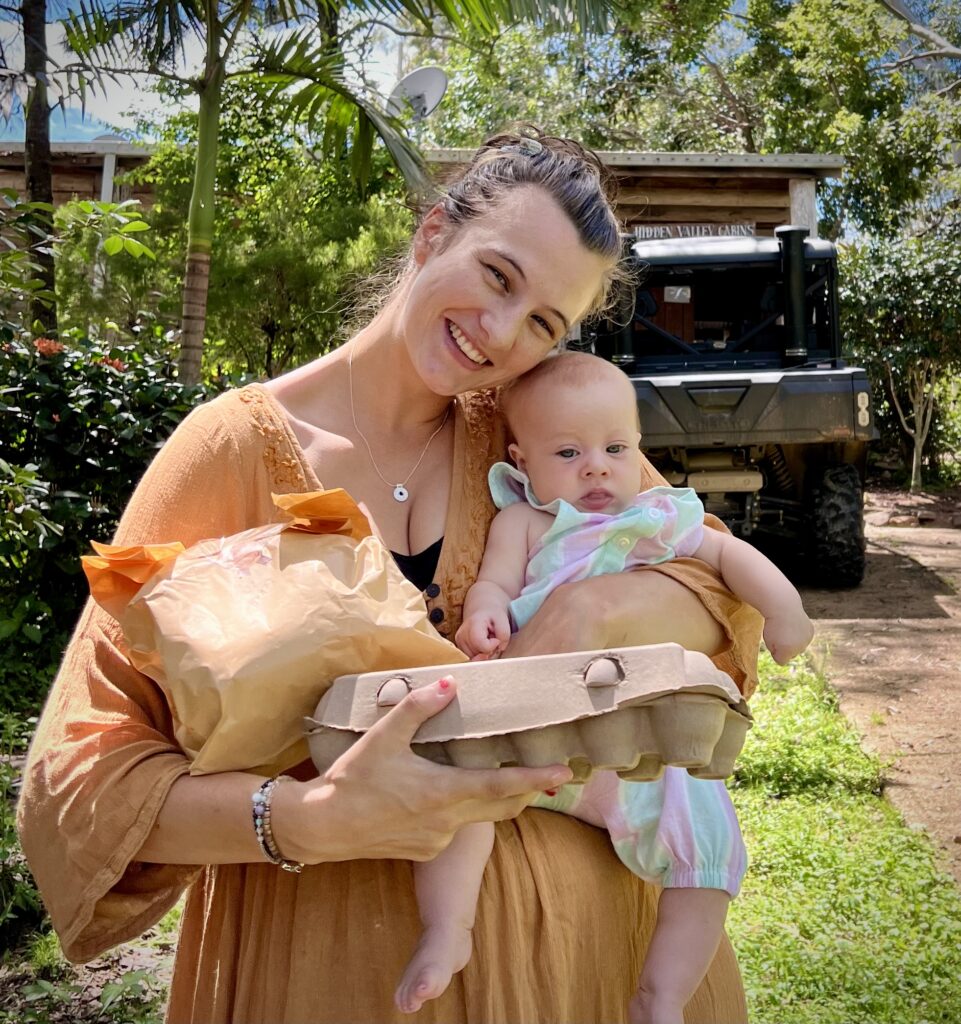
Did you know that Tahlia at Hidden Valley Cabins is baking fresh ‘regular’ and sourdough bread to order? She is also selling fresh, free range eggs. I’ve sampled both and it is all fabulous. If you would like to order some be aware she’s only able to bake 2-3 loaves/day and needs 24hrs notice…2 days notice if you’re after sourdough. You can order by contacting Hidden Valley Cabins on 07 4770 8088 or just message them on their Facebook page.
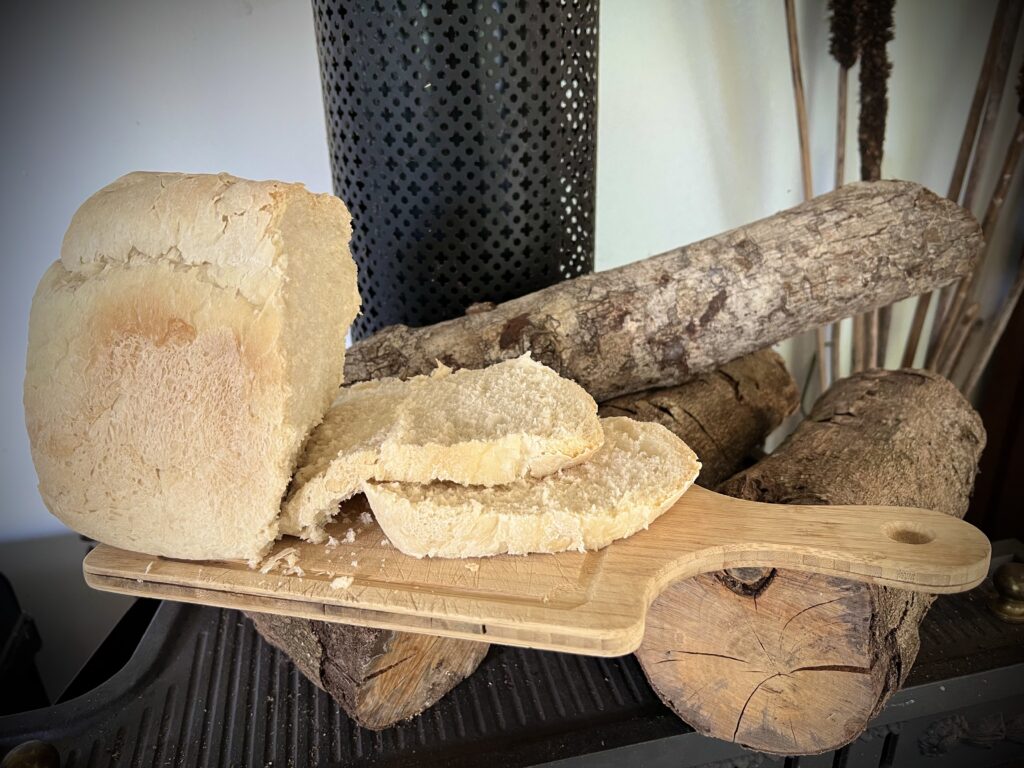
This is a great way we can support one of our local businesses doing their best to stay open. The quality of a very reasonably priced, locally sourced food means it’s a win-win for all.
Perhaps, when you go to a yoga class with Tracy Armstrong on Fridays, you can grab your order on the way back home. Do check times for classes with Tracy if you’re wanting to attend.
Text and images: J. Poletto

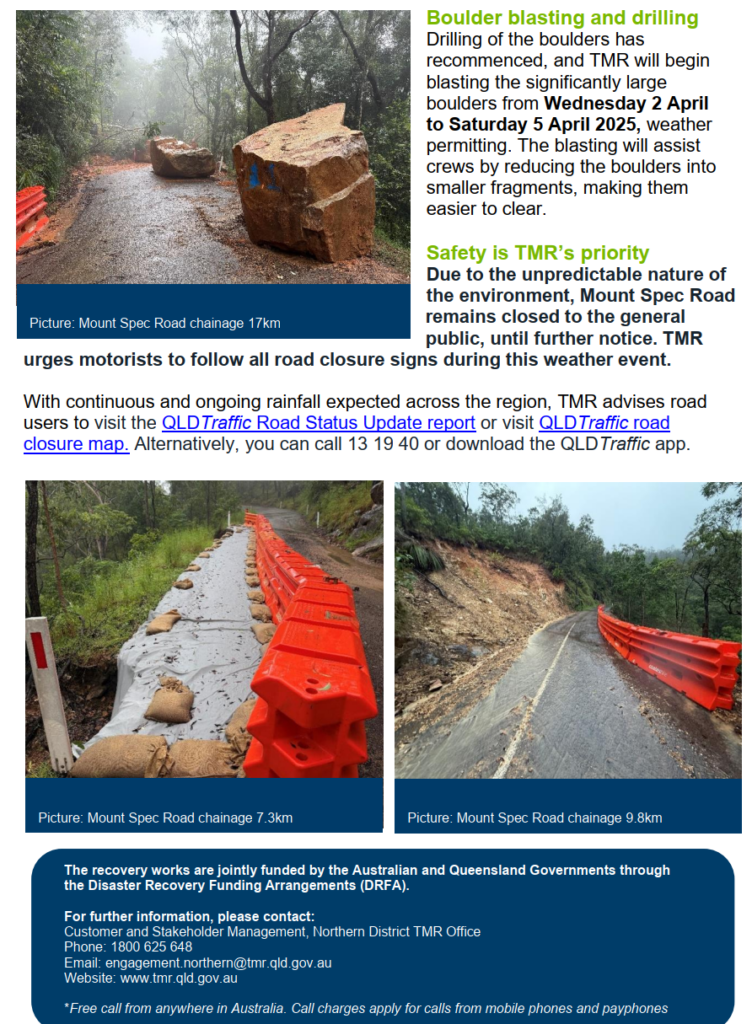
Peter and Violet were heading down to Ingham yesterday when they came across a Boyd’s Forest Dragon (Lophosaurus boydii) in the middle of the road out near Graham Pope’s place.

The dragon wasn’t bothered by being the subject of an intense photo session, first by Peter and Violet, and after that by Jan and me when we got out there after a call from Peter and Violet.
It remained motionless even when we got down to take close-ups from only about 30cm away.
Adult male dragons are about 48cm and females around 42cm but this one was around 30-35cm and probably a juvenile.
L. boydii is restricted to rainforests and their margins in the wet tropics, from just north of Townsville to near Cooktown. It is found in both upland and lowland rainforest, and is often seen around Lake Eacham and Lake Barrine.
Unlike most other lizards, Boyd’s forest dragon does not bask in the sun, instead letting its body temperature fluctuate with air temperature thermoconforming rather than thermoregulating.
Boyd’s forest dragon spends the majority of its time perched on the trunks of trees, usually at around head height, although daily movements can exceed 100 m (330 ft) on the ground. After being motionless for maybe half an hour, it took a nudge with a stick to encourage it to get off the road. When it moved, it moved very fast, semi upright with front legs off the ground and back legs pedalling like crazy.
Thanks to Peter, Violet and Wikipedia.
Photos and text submitted by Peter Cooke
Early this week a curious reptile turned up at the “top border gate” blocking the range road. It parked up on the bitumen while many photos were taken.


Three ecologists/herpetologists were consulted and all agreed this is a healthy and happy specimen of Coeranoscincus frontalis — aka the limbless snake-toothed skink.
It currently sits within the Coeranoscincus genus but ecologist Nic Gambold believes it may be on the way to getting a genus of its own. Amongst the professionals taxonomy and peer review moves slowly but carefully.
Michelle Bird’s herpetologist mate Greg Calvert commented that it’s a rare day he ever sees one of these and the good news is that after being listed as a threatened species for many years it has now been reclassified as “least concern”.
Jamie Oliver found one here in 2023 and posted pictures and a story on Paluma.org.
C. frontalis is a Wet Tropic Species, but other members of the Coeranoscincus genus are found much further south.
C. frontalis at around 29cm (nose to vent) is the longest species in the genus. Our visitor was probably between 30-35cm overall, so quite a big one.
C. frontalis hangs out in the rainforest under logs and leaf litter and worms are a favorite food. I guess the reference to snake-toothed means it’s well equipped for this task.
Unlike a number of other legless lizards which have visible vestigial legs, C. frontalis has no sign of legs.
Eventually, the specimen at the range gate decided to move on but just couldn’t get any traction on the wet bitumen and needed a lift into the verge. It then quickly headed back to the privacy of the rainforest, but not before revealing the strong orange/yellow underbelly and other attractive markings.

Story and pics by Peter Cooke,
with thanks to Nic Gambold, Laurie Ross and Greg Calvert.